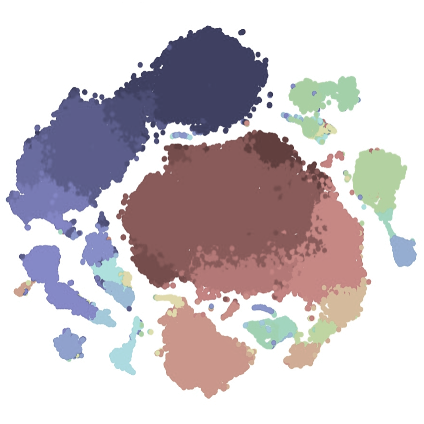Our team works collaboratively to develop new computational methods for the analysis of high-dimensional cytometry and spatial data, addressing significant challenges in the field.
Rapid and scalable analysis of cytometry data
The recent expansion of high-dimensional cytometry, single-cell, and imaging technologies has lead to a significant shift in our approach to analysing immunological data. As the size and complexity of high-dimensional cytometry data continue to expand, comprehensive, scalable, and methodical computational analysis approaches are essential. To address these challenges, we have introduced methods for rapid integration and analysis of cytometry data, streamlining raw data pre-processing, data integration, clustering, dimensionality reduction, visualization, and population annotation, and differential analysis (Ashhurst et al 2022). Leveraging the speed and and power of the data.table R framework, these analysis strategies enable scalable analysis of large cytometry datasetes. To further expand the scalability of these approcahes, we have introduced strategies for density dependent compression of cytometry data, reducing dataset sizes while preserving biological diversity (Putri et al 2024).
Batch integration of cytometry data
Contemporary clustering and dimensionality reduction tools alone are insufficient to analyze or reproduce analyses across large numbers of samples, batches, or experiments. Yet, approaches that allow for the integration of cytometry data across batches or experiments are not well developed, and not commonly incorporated into computational toolkits to allow for streamlined workflows. Additionally, single-cell atlas datasets, such as those being generated by the Human Cell Atlas and HubMAP consortiums, would allow for the rapid and automated classification of cell types, and the mapping of these cell types to relevant inflammatory states, greatly enhancing the speed and accuracy of investigations into novel diseases. We have introduced multiple strategies for cytometry data integration, both with and without the use of biological reference controls (Ashhurst et al 2022, Jalali et al 2023).
Tracking dynamic immune responses over time
The immune response is a dynamic process in time, and inter-individual differences therein often underlie diverging clinical outcomes. Under challenge, the immune response deviates from homeostasis with the expansion of numerous cellular phenotypes that enact challenge-specific effector functions in a temporally-coordinated fashion. However, algorithmic solutions for annotating the immune response dynamics with respect to time and disease-stage are lacking. To address these challenges, we have introduced new methods for analyzing the immune response dynamics from time-course or disease-stage cytometry data (Putri et al 2019, Putri et al 2023).
Mapping immune responses to disease
By comprehensively mapping dynamic immune responses at the single cell level over time and disease state, we seek to better understand the determinants of immune mediated protection and pathology in infectious diseases. We have applied our approaches to diverse areas of immunology, including: immune system development (Jalali et al 2022, Ni et al 2024, Taheri et al 2024), viral encephalitis (Niewold et al 2020, Hayashida et al 2019), COVID-19 disease (Koutsakous et al 2021, Zhang et al 2022, Baird et al 2023), and vaccination (Verstegen et al 2023, Liu et al 2024).
